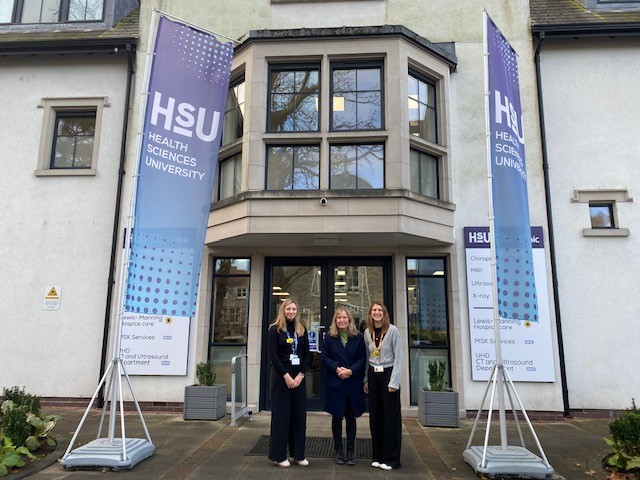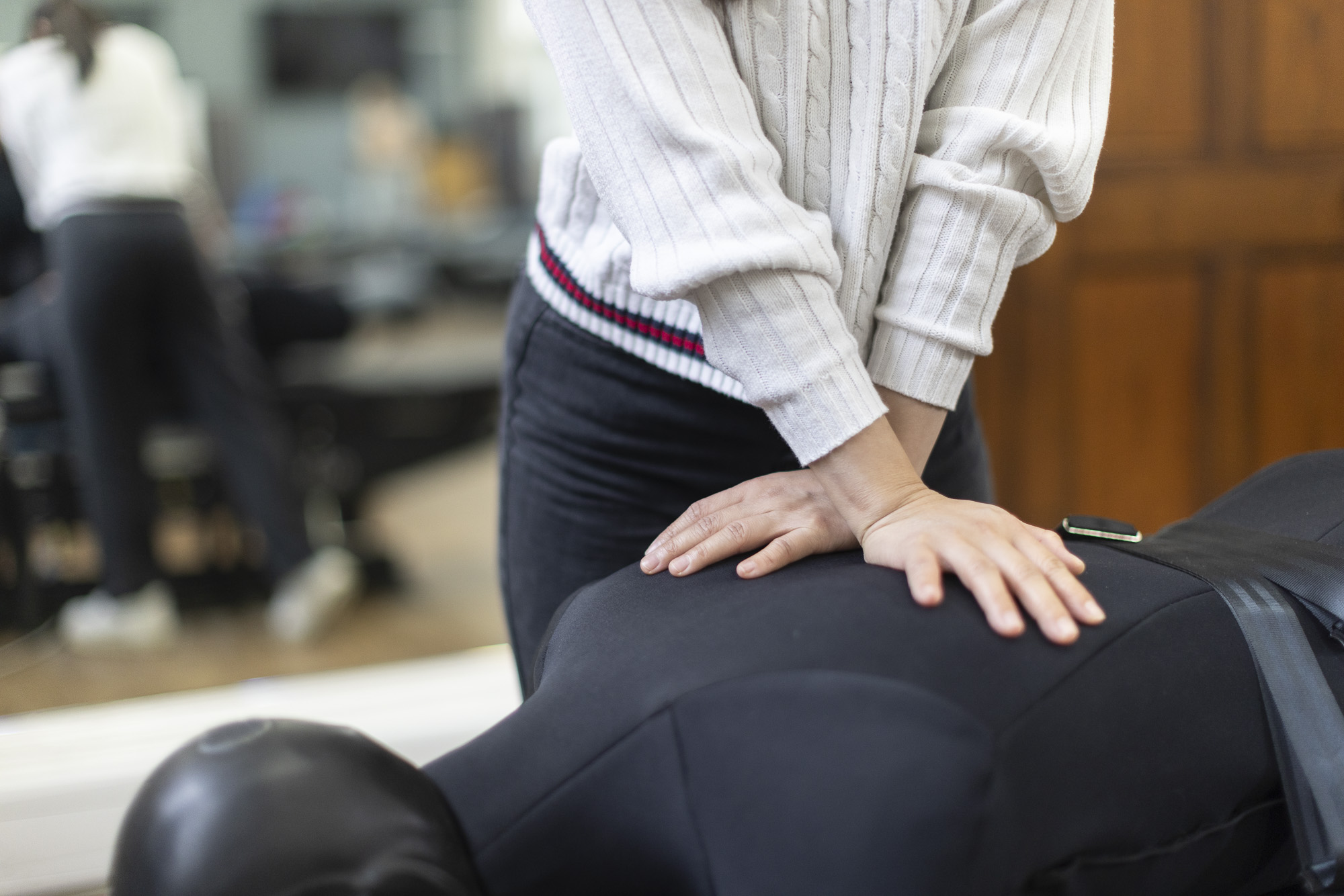Using embodied illusions and therapeutic touch to modulate chronic pain:
An Active Inference approach to chronic pain management.
An Active Inference approach to chronic pain management.

Chronic pain affects around 30% of the global population and imposes significant personal and economic burdens [1]. In the UK, musculoskeletal (MSK) conditions account for 84% of chronic pain cases [2], with back pain alone costing the economy £1.6 billion in direct costs and £10 billion in indirect costs [3]. Many sufferers experience persistent pain, with 34% reporting no improvement over six years.
Traditionally, chronic pain was linked to physical damage, but 90% of chronic low back pain cases are classified as nonspecific [5], shifting the focus to brain-based pain processing [6]. Pain perception involves exteroception (external sensory input) and interoception (internal bodily states) [7]. Emerging research suggests pain is shaped by predictive brain models, where expected pain can persist despite no nociceptive input [6]. These expectations are influenced by contextual cues [8, 9,10], including therapeutic relationships and touch, which can be modulated, as explained by an Active Inference mechanism, to reshape pain models [11].
Virtual Reality (VR) has shown promise in pain modulation by altering sensory prediction errors [12,13]. A novel intervention combining VR with Manual Therapy (MTVR) could enhance expectation-based pain relief by leveraging embodiment and sensory illusions [14]. MTVR is an embodied virtual reality environment where both external therapeutic touch is combined with body illusions (e.g. colour change in virtual body part in pain) that leverage shifts in brain prior beliefs about pain that then reduce pain through active inference mechanisms.
Email: dnewell@aecc.ac.uk
This study will explore the feasibility and acceptability of MTVR in modulating chronic pain perception by:
MTVR is being developed through a Research Innovation Funding grant in collaboration with AUB, with proof-of-concept expected before the PhD starts. The project will consist of 3-4 linked studies within the proposed Pain Active Inference Lab (PAIn Lab) at HSU:
The study anticipates that MTVR will:
If successful, this study could:

We have funding available via fee-waiver support for up to three UK home students. Applicants are asked to make it clear as part of their application that they are applying for this opportunity. Decisions will be made based on the excellence of the candidate.
Self-funded students are also welcome to apply for this project. Self-funded students can be UK home students or international students.

Available to both UK and International students.


Steven P Cohen, Lene Vase, William M Hooten. Chronic pain: an update on burden, best practices, and new advances. The Lancet. Volume 397, Issue 10289, 2021, Pages 2082-2097,
The State of MSK Health 2021 (https://www.versusarthritis.org/media/24653/state-of-msk-health2-2021.pdf ).
Maniadakis, N. & Gray, A. (2000). The economic burden of back pain in the UK. Pain. 84(1), 95-103. DOI: 10.1016/S0304-3959(99)00187-6
Chronic pain in adults 2017: Health Survey for England (Chronic pain in adults 2017: Health Survey for England)
Low back pain World Health Organisation
Ongaro G, Kaptchuk TJ. Symptom perception, placebo effects, and the Bayesian brain. Pain. 2019 Jan;160(1):1-4. doi: 10.1097/j.pain.0000000000001367. PMID: 30086114; PMCID: PMC6319577.
Di Lernia D, Lacerenza M, Ainley V, Riva G. Altered Interoceptive Perception and the Effects of Interoceptive Analgesia in Musculoskeletal, Primary, and Neuropathic Chronic Pain Conditions. Journal of Personalized Medicine. 2020; 10(4):201. https://doi.org/10.3390/jpm10040201
Cook CE, Bailliard A, Bent JA, Bialosky JE, Carlino E, Colloca L, Esteves JE, Newell D, Palese A, Reed WR, Vilardaga JP, Rossettini G (2023). An international consensus definition for contextual factors: findings from a nominal group technique. Front Psychol. 2023 Jul 3;14:1178560. doi: 10.3389/fpsyg.2023.1178560. PMID: 37465492; PMCID: PMC10351924.
Sherriff B, Clark C, Killingback C, Newell D (2022). Impact of contextual factors on patient outcomes following conservative low back pain treatment: systematic review. Chiropr Man Therap. 2022 Apr 21;30(1):20. doi: 10.1186/s12998-022-00430-8. PMID: 35449074; PMCID: PMC9028033.
Rossettini G, Camerone EM, Carlino E, Benedetti F, Testa M (2020). Context matters: the psychoneurobiological determinants of placebo, nocebo and context-related effects in physiotherapy. Arch Physiother. 2020 Jun 11;10:11. doi: 10.1186/s40945-020-00082-y. PMID: 32537245; PMCID: PMC7288522.
McParlin, Zoe & Cerritelli, Francesco & Manzotti, Andrea & Friston, Karl & Esteves, Jorge. (2023). Therapeutic touch and therapeutic alliance in pediatric care and neonatology: An active inference framework. Frontiers in Pediatrics. 11. 10.3389/fped.2023.961075.
Riva G, Wiederhold BK, Mantovani F. Neuroscience of Virtual Reality: From Virtual Exposure to Embodied Medicine. Cyberpsychol Behav Soc Netw. 2019 Jan;22(1):82-96.
Cerritelli F, Chiera M, Abbro M, Megale V, Esteves J, Gallace A, Manzotti A. The Challenges and Perspectives of the Integration Between Virtual and Augmented Reality and Manual Therapies. Front Neurol. 2021 Jun 30;12:700211.
Hadjiat Y and Marchand S (2022). Virtual Reality and the Mediation of Acute and Chronic Pain in Adult and Pediatric Populations: Research Developments. Front. Pain Res. 3:840921. doi: 10.3389/fpain.2022.840921
Discover and read all the latest news, press releases and happenings here at Health Sciences University.

Health Sciences University (HSU) recently hosted a thought-provoking panel discussion in celebration of International Day of Women and Girls in Science.

Dr Mahitha Naidu has recently graduated from the MSc Podiatry (Pre registration) course at Health Sciences University.

Health Sciences University, in collaboration with Dorset HealthCare, has launched a new Brain Health Clinic on its Bournemouth campus.

Carla tells us more about her experience of the course so far and what she enjoys about being part of the HSU community.

Dan Egelstaff is a First Year student on the MSc Occupational Therapy (pre-registration) course. The degree at Health Sciences University appealed to Dan when he was working as a Learning Disabilities Support Worker during the Covid-19 pandemic.

Natalia Purkiss is in her first year of the MSc Occupational Therapy (pre-registration) course at Health Sciences University.
Health Sciences University
Bournemouth Campus
Parkwood Road
Bournemouth
BH5 2DF
Health Sciences University
London Campus
275 Borough High Street,
London
SE1 1JE